The other night I had beers with our small foreign correspondents’ club here in Ann Arbor. It’s a who’s-who of writers guaranteed to make anyone in this business sit up straight. Former media leads from Reuters swap stories with folks who call the Times’ travel editor “Monica.” Our founding member used to head an AP bureau and the man who hosts our poker game has a coat rack for all his old press passes.
Then there’s me… some freelancer with a blog to his name and mud on his shoes. It’s not exactly comparable company, but they let me in anyway.
I always love hanging out with other journalists. When you get down to it, the same qualities that make a solid reporter also tend to make for a pretty good drinking buddy. We love telling stories, and most of us are even pretty good at it.
Trouble is, you can’t always tell every story.
These are the single-source pieces, the adventures that strain credibility and the interviews that just raise your instincts as being off.
When you write for a living you collect some stories like random bits at the bottom of a suitcase. They’re too valuable to throw away, too tarnished to use. These are the ones we sit on, breaking them out every now and again at the bar after deadline. “There was this time,” is usually all it takes. Everyone will nod in sympathy and maybe, if they’re feeling generous, stand a round.
A lot of stories get filed away into this lost and found bin of journalism. These are the single-source pieces, the adventures that strain credibility and the interviews that just raise your instincts as being off.
Most of the time, though, these are the stories that you know in your gut are true but just can’t prove. If you’re not careful they can become a white whale, leading even great journalists to spend years trying to source a dead end.
Here, stripped of their juicy bits, are a few of mine.
The Farm Town Rebellion
It started at 1:15 in the morning over tequila shots with a college student from Washington D.C. We were at a bar in South America when he wandered over to introduce himself.
“You’re the journalist, right?” he asked. When I cautiously allowed that, yes, during working hours (ordinarily held four to six beers earlier in the evening), that’s how I earn a living, he got serious.
“I have to tell you something.”
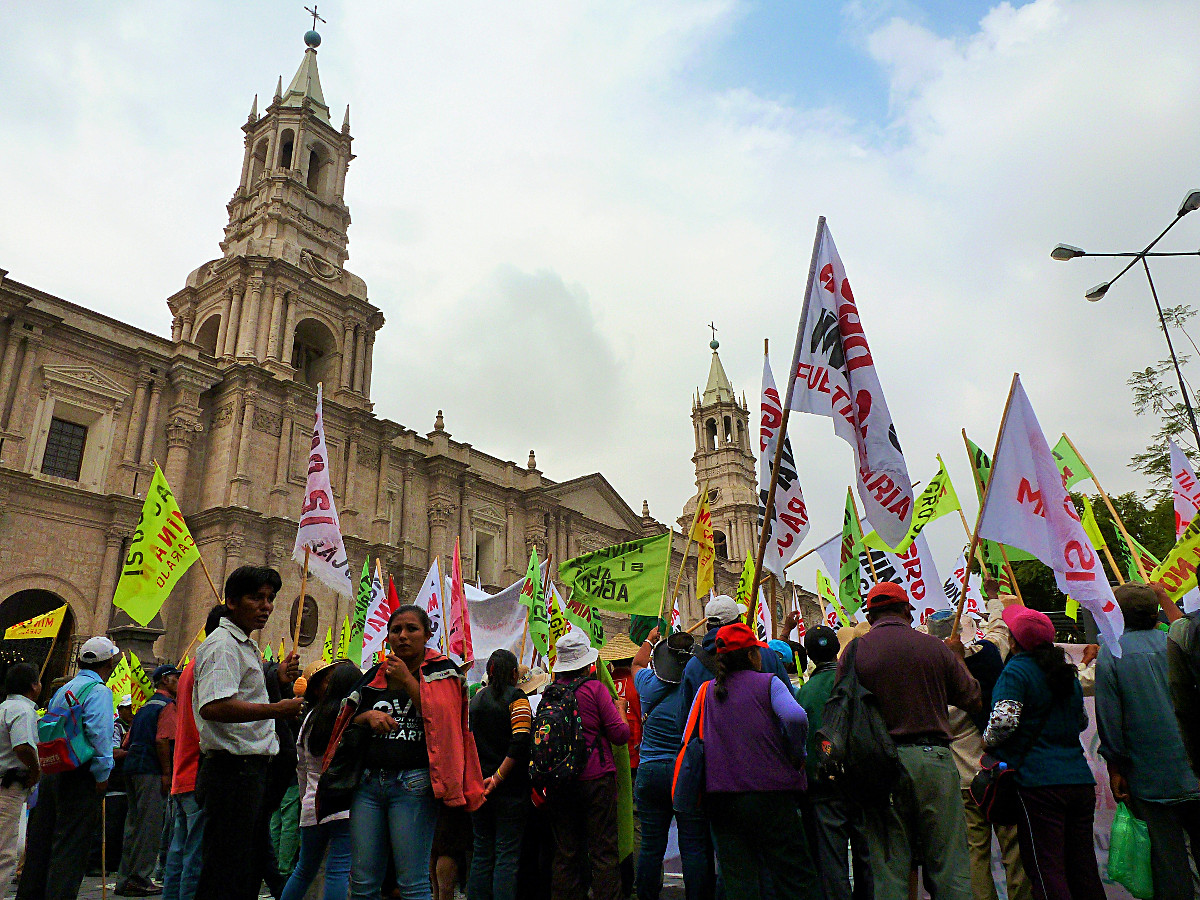
Protestors gather outside the cathedral in Arequipa, Peru. Not where this story is from, sorry.
He had a story ripped straight from the movies. According to this American he had just come down from spending the semester on a WWOOF experience, growing coffee beans on a local farm. He was in town after being forced to evacuate, with the other college-age workers, when the nearby village went to war with the government.
The story, as he told it, started with mineral rights and a foreign company’s plan to mine the land surrounding this mountain village. To protect their farms from blasting and toxic runoff the community took to the streets in protest. They barricaded the only bridge into town. Villagers sat down on one end while heavy equipment idled on the other, waiting to roll in and get to work.
Then the military arrived to back up the miners.
What followed was a three-day siege and pitched battle, one fought over a single stretch of road. The local clinic served as a field hospital, triaging burn victims with Fanta bottles while soccer players charged the bridge to kick back red hot canisters of tear gas. Riot police tried to storm across, only to meet fierce resistance from farmers who refused to give ground.
[M]y source ghosted… I’ve never found the village, don’t know the company and can’t corroborate the story with local authorities.
The siege broke on the third day when soldiers opened fire on the unarmed crowd with live ammunition.
“People,” my source said, “died.”
Now, while happy to buy a round and hear his story, truth be told I didn’t believe it for a minute. I was smugly convinced that something certainly had happened, but equally convinced that this drunken social justice warrior had transformed some local land protests into an epic battle against The Man.
Then he gave me a flash drive with three gigabytes of film and photographs showing every. single. thing.
I felt like a skeptic who’d just bought do-si-dos from the Easter Bunny.
So why can’t I report this as fact? Why can’t I name the city or even the country this happened in? Because my source ghosted. He gave a fake e-mail address and, as far as I can tell, a fake name. I’ve never found the village, don’t know the company and can’t corroborate his story with local authorities. All I have is unsourced footage of a battle that one small town fought, where farmers and soccer players faced off against black-masked soldiers.
I know it happened, I just can’t prove it.
But if Matt Damon is looking to option a script, I’ve got a good one.
The Ghost Story
Every autumn I like to go out looking for ghost stories. They’re interesting, and almost always lead to other stories more interesting still. You don’t report them as fact, of course. They’re culture pieces and travel stories. No self-respecting newspaper would run a ghost story as reported fact and no self-respecting journalist would write one, for very good reason: there’s no such thing as ghosts. I’m about 90 percent certain.
Maybe 80 percent.
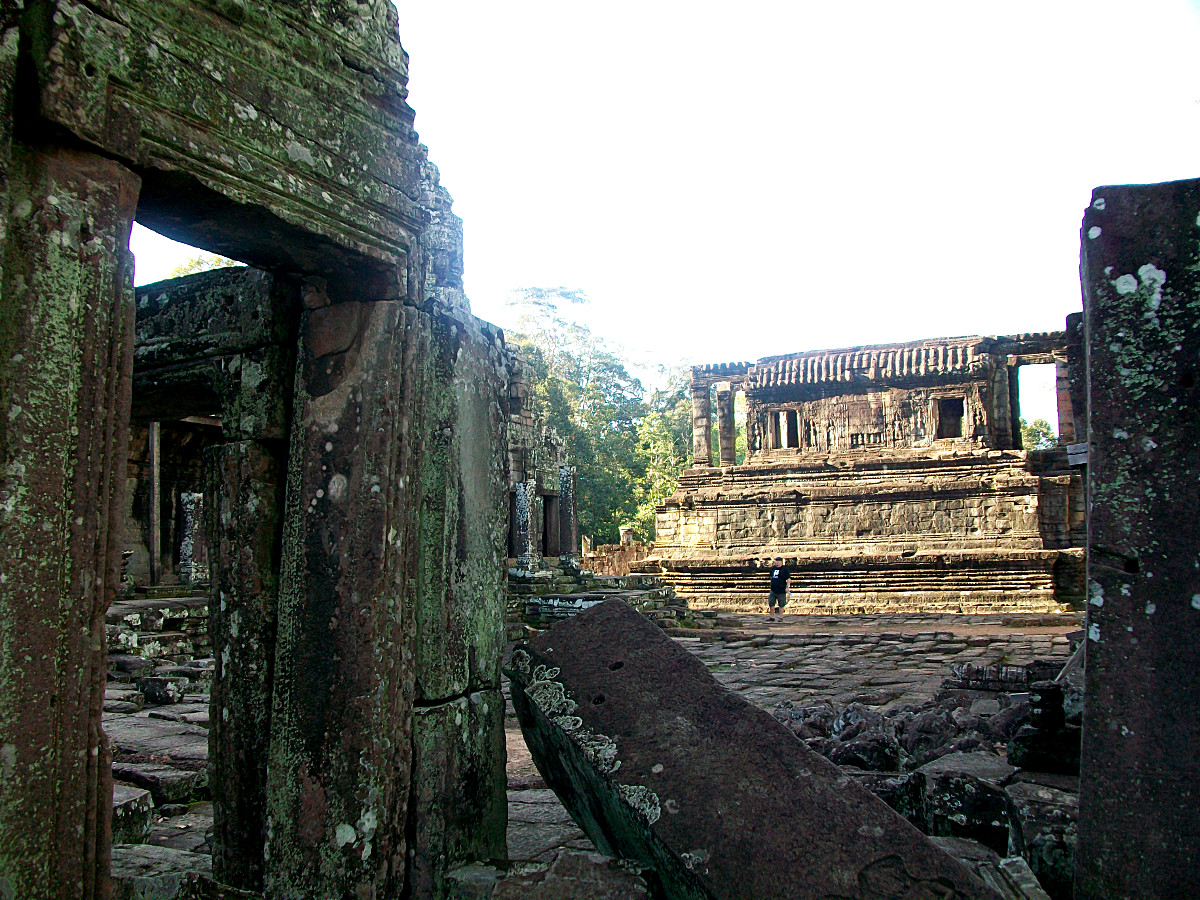
Waiting for ghosts in Angkor.
The thing is, do this job long enough and eventually you see a little something of just about everything. That includes some stuff I’ve never been able to explain.
Take, for example, the car that wasn’t there.
It was late, well past 2 a.m., and I was driving home on a stretch of road far from anything one would consider civilization. With a lake to the left, a steep slope to my right and absolutely no streetlights, this was officially the middle of nowhere. So I didn’t expect a boxy car to show up in the dark ahead of me.
It had the shape of a station wagon, as best I could tell from head on and far away, and two very bright, very square headlights. For a while the only odd thing was that anyone else was out in this place at this time of night. When the car swerved across my lane and disappeared into the darkness it seemed like all was back to normal.
I’m not saying there’s ghosts, I’m not saying anything more than what I saw. But I’ve seen women in black and I get why theaters light ghost lamps.
Until I got to the fork in the road where the station wagon had turned and found… nothing. No fork, no turning of any kind. The stony hillside was just as steep, and the guardrail unbroken, for another mile. There was no turn and there was no car.
As to what someone else was doing out at that time of night? I’ve got no idea, but I can tell you what someone else was doing out that time of night a year earlier, because according to the local paper that’s when a local high school girl lost control on some black ice. She careened off the road, through the guardrail and crashed into the stoney hillside. The unfortunate young woman drove a very boxy model of station wagon.
I’m not saying there’s ghosts, I’m not saying anything more than this. But I’ve seen women in black and faces staring at me out of empty windows, and I get why theaters light ghost lamps. And all that up there? That’s exactly how it happened.
The Palestinian Martin Luther King
Sometimes a story is so exciting, so cool, that we want to write it yesterday. That’s what we in the industry call “bad journalism.”
Reporting takes time. It’s 20 percent cool and 80 percent tedious fact checking, background research and editing, editing, editing. You must be ready to prove every, single fact and defend every piece of analysis, and must make very clear the difference between the two. (Indeed, this is a reason why so many lawyers become journalists. The way we write is much alike in this regard.)
Part of this is to avoid looking foolish, but most of it is a recognition of the power that journalists have.
When a story is sloppily written or poorly researched, when we rush a piece because it seems too good to wait, that can have consequences, especially for our sources. That’s why a journalist needs to do the work and do it right, see: Rolling Stone Magazine and the University of Virginia. As a result, some pieces sit on the shelf for a very long time.
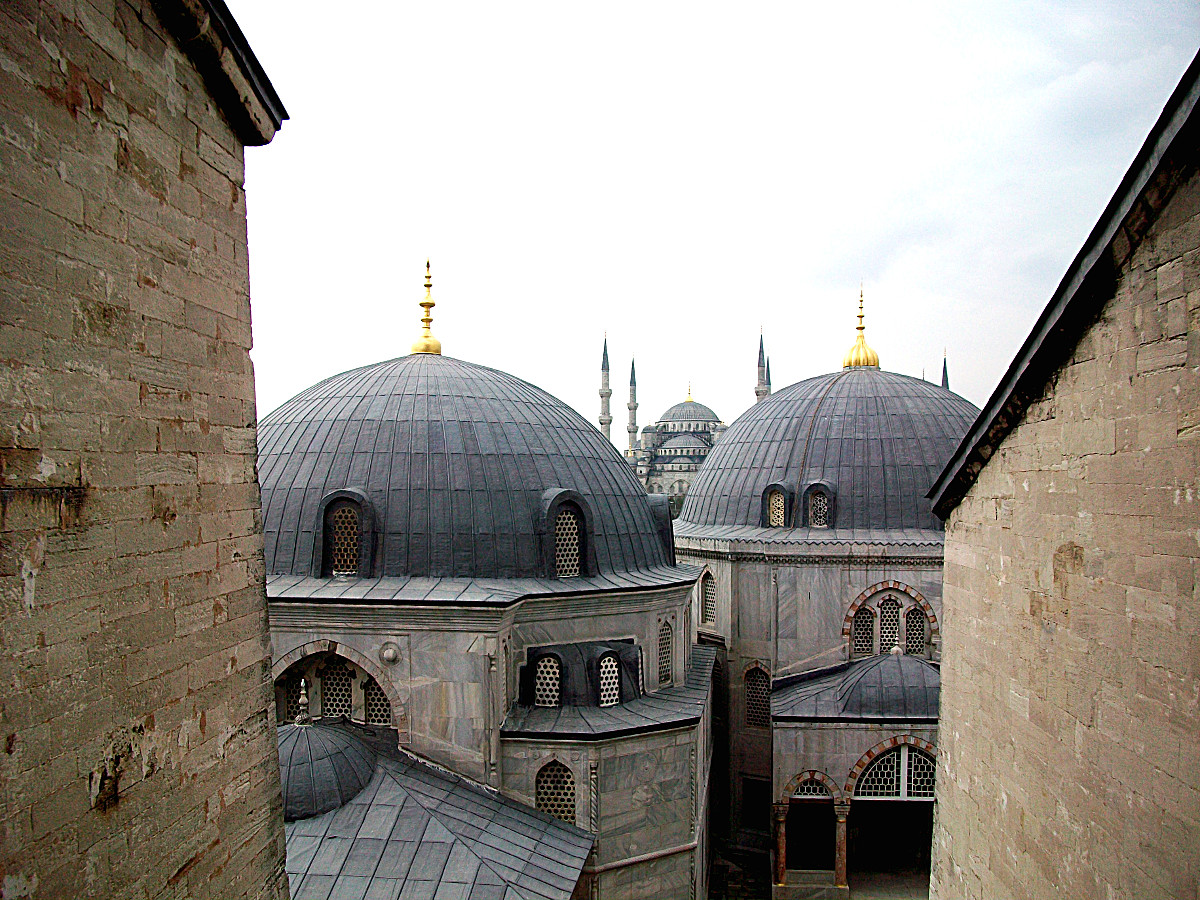
Do it once, do it right and it might be around 1,000 years from now.
Take, for example, the story of the Palestinian Martin Luther King.
I first heard this referenced by a college professor during an interview about recent terrorist attacks.
“By the way,” he said during our conversation, “if you’re interested in this subject, I have a guy in Palestine who’s going to be their Martin Luther King.”
That got my attention.
Before I knew it we had spent 20 minutes discussing a young visionary in the Middle East, the original subject of our interview completely forgotten. This guy does sound like the real deal. To hear my source tell it he’s a confident, strong leader pushing an aggressively nonviolent agenda in a political environment where far too many people see bloodshed as the only true mark of strength.
Of course, that’s to hear one professor tell it.
Now, nonviolent Palestinian movements have captured the imagination of foreign policy thinkers for decades, many of whom believe that a pacifist with real traction could destabilize the longstanding Israel/Palestinian conflict. (For better or worse.) So why is this story nothing more than a handful of jotted notes on a bookshelf? Why haven’t I pushed it on every channel from CNN to the street corner?
Because it isn’t done yet. It won’t be done until I get my feet on the ground and actually see if this guy has an audience beyond a few academics here in the United States and an optimistic journalist. That’s when this will be worth telling.
Stories fall apart when you serve them up too early. When they’re not done yet, well… that’s a story that you can’t tell.
- Write More Listicles - August 12, 2021
- Find The Hard Interview - July 28, 2021
- Using Your Voice - August 22, 2018

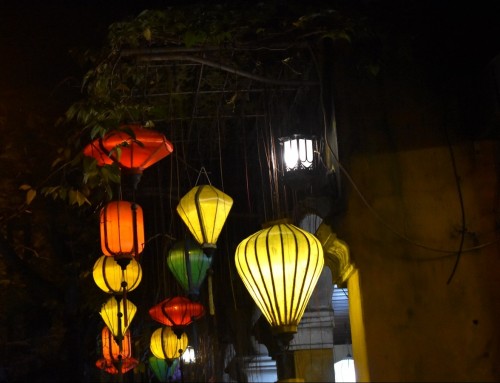
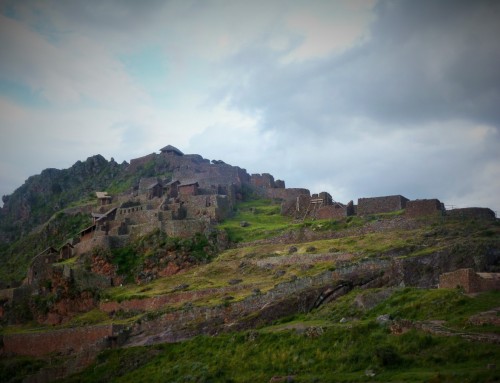



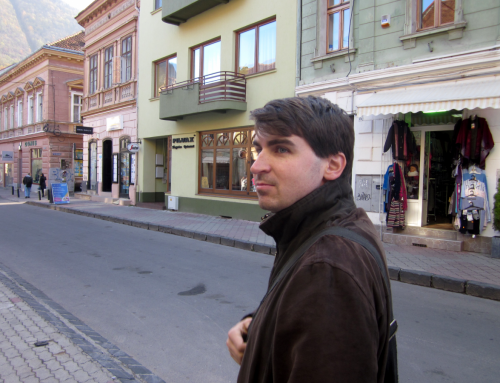
Leave A Comment